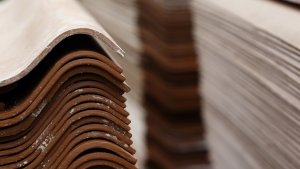Detection and determination of asbestos
Detection and determination of asbestos
Asbestos, a fibrous silicate mineral, was used as one of the most important building materials until 1993. Its chemical resistance, heat resistance and low flammability made it a popular material in products such as Eternit panels, roof tiles and seals. However, despite its useful properties, asbestos poses considerable health risks.
Inhaling asbestos fibers can lead to serious health problems, including lung cancer, shortness of breath, asthma and asbestosis. For this reason, asbestos was completely banned in Germany in 1993. forbidden. But how do you recognize asbestos in older buildings and materials?
The year of construction of a building can be a first indication. If a building was constructed between 1930 and 1993, it is possible that materials containing asbestos were used. However, a detailed investigation is required to identify asbestos with certainty.

There are different forms of asbestos, including weakly bound asbestos, pure asbestos and strongly bound asbestos. Weakly bound asbestos, found in products such as adhesives and sealants, is particularly dangerous and can easily release fibers. Strongly bound asbestos, such as that found in asbestos cement sheets, poses less of a risk as long as it is not damaged or disturbed.
If asbestos is suspected, a specialist company should always be consulted. Specialist laboratories can analyze material samples and determine whether they contain asbestos. If the results are positive, it is important to take appropriate steps to clean up and dispose of the asbestos.
Finally, it is important to emphasize that asbestos poses serious health risks. In case of suspicion or uncertainty, it is always advisable to contact Experts and have the material professionally checked.




Leave a Reply
Want to join the discussion?Feel free to contribute!